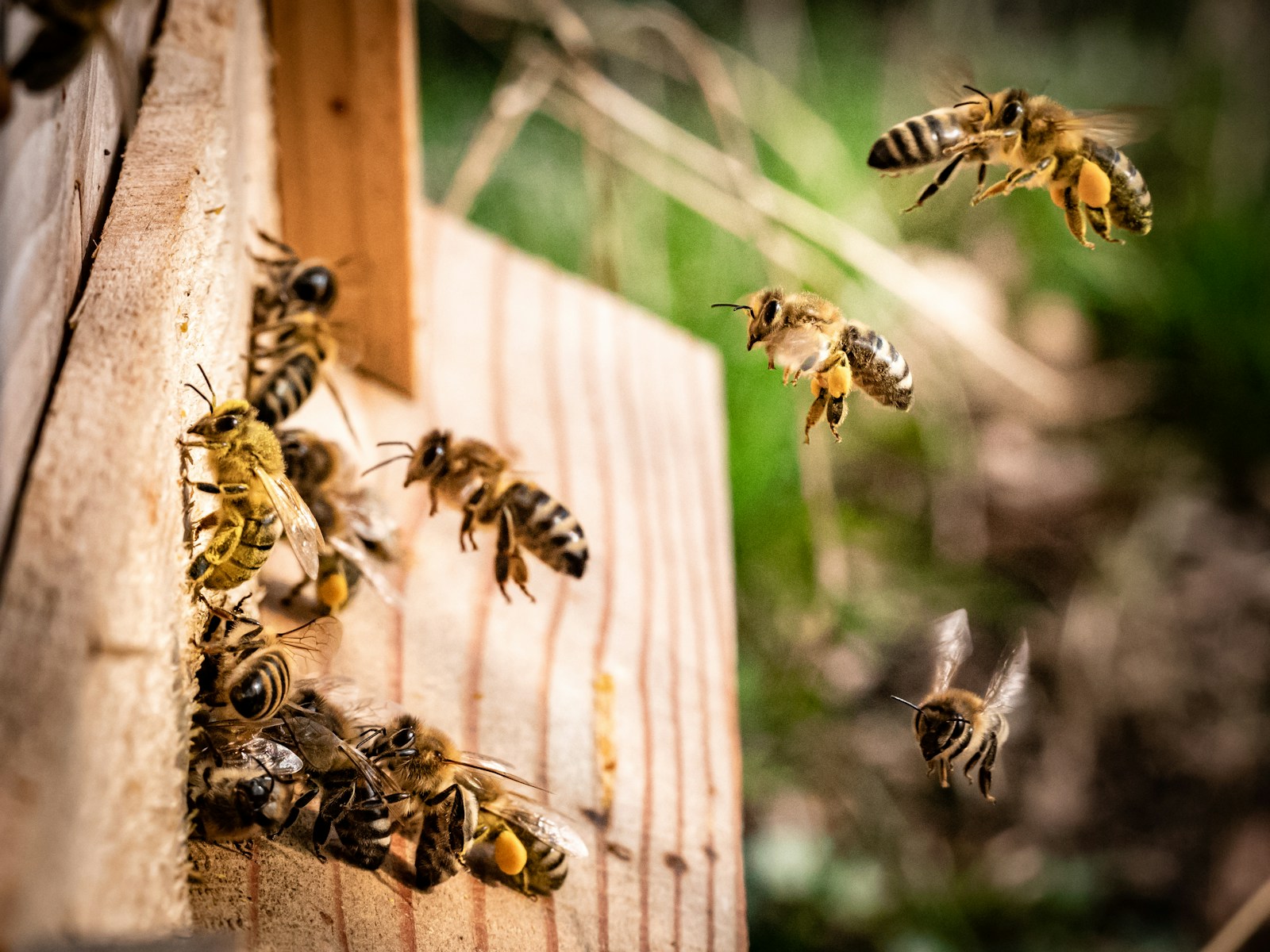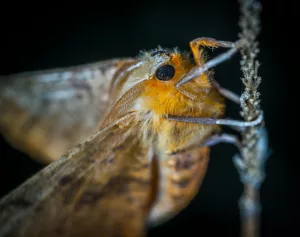When you find a swarm of bees, it can be quite an overwhelming experience, especially if you’re not familiar with bee behavior. But before you panic, let’s explore how you can handle this situation safely and humanely. Bees are essential pollinators, and preserving their populations is crucial for our environment. Here’s how you can manage a bee swarm without causing harm to these vital creatures.
Identifying the Bees
Proper identification is the first step in handling a bee swarm effectively. It’s not just about knowing you have bees, but understanding what type you’re dealing with. Honeybees, for instance, are different from bumblebees, carpenter bees, or wasps. Each species has unique behaviors and roles. Honeybees are excellent pollinators and swarm when they’re in search of a new home. Bumblebees, on the other hand, usually nest in the ground or abandoned rodent holes. Wasps can be more aggressive and require different handling techniques.
How to Identify Different Types of Bees
- Honeybees: Typically golden-brown with black stripes, honeybees are smaller and have a more slender body compared to bumblebees. They form large colonies and are generally gentle unless provoked.
- Bumblebees: These are larger, with a more robust and fuzzy appearance. They have black and yellow patterns and are less aggressive than wasps.
- Carpenter Bees: Similar in size to bumblebees but with a shiny, black abdomen. They tend to bore into wood to make their nests, which can cause structural damage.
- Wasps and Hornets: Wasps are more aggressive, with a sleek body and narrow waist. Hornets are a type of wasp that can be larger and more aggressive.
Find the Source
Once you’ve identified the type of bees, the next step is to locate the hive or swarm. This is crucial in understanding the scope of the issue and planning the appropriate response.
Steps to Locate the Hive
- Observe the Flight Path: Bees travel back and forth from their hive, so observing their flight path can lead you to their location. Early morning or late afternoon are the best times to do this, as bee activity is higher.
- Listen for Buzzing: A concentrated buzzing sound can indicate the hive’s proximity, especially if it’s hidden within walls or trees.
- Check Common Nesting Areas: Bees often build hives in trees, wall cavities, or under eaves. Look for any unusual clusters or activity in these areas.
Contact a Beekeeper
Reaching out to a local beekeeper can be one of the most effective and humane ways to deal with a bee swarm. Beekeepers are trained to handle bees and can relocate them safely.
How Beekeepers Assist
- Assessment: They will start by assessing the situation to determine the best course of action.
- Specialized Equipment: Beekeepers use equipment like bee vacuums and swarm boxes to gently collect and transport bees.
- Relocation: The bees are relocated to a safer environment, often to apiaries where they can continue to thrive.
- Networking: Beekeepers often have a network of other professionals and resources, making it easier to find a quick and effective solution.
Use Smoke
Smoke is an age-old tool used in beekeeping to calm bees. It works by masking alarm pheromones released by guard bees, preventing the colony from becoming defensive.
How to Use Smoke Effectively
- Bee Smoker: A bee smoker is a device that produces smoke from smoldering materials like wood chips or pine needles. It’s essential to light the smoker properly to produce cool smoke, which is less likely to harm the bees.
- Application: Direct the smoke at the entrance of the hive or around the swarm to calm the bees. Be gentle and avoid over-smoking, as heavy smoke can drive the bees to abscond.
- Safety Precautions: Always ensure you’re using natural, non-toxic materials in your smoker to avoid any chemical residue that could harm the bees or you.
DIY Bee Repellents
Natural repellents can be a great tool for encouraging bees to relocate without causing them harm. These can be particularly useful if the bees are in an area where they pose a nuisance but don’t require professional removal.
Making and Using Natural Repellents
- Peppermint Oil: Mix a few drops of peppermint oil with water and spray it around the area where the bees are unwanted. Bees dislike the strong smell and will often move away.
- Cinnamon: Sprinkle ground cinnamon around the hive area daily for about a week. The smell can encourage bees to find a new home.
- Citrus Sprays: Boil citrus peels in water to create a natural spray. Once cooled, apply around the hive location. The strong citrus scent is unappealing to bees and can drive them away.
Be Cautious
Dealing with bees requires caution to ensure your safety and theirs. Protective clothing and calm movements are crucial.
Protective Measures
- Bee Suits: Wear a full bee suit with a veil to protect against stings. These are available at many garden centers or online.
- Gloves: Wear thick gloves to protect your hands, although some experienced beekeepers prefer to work without them for better dexterity.
- Slow Movements: Bees can be sensitive to rapid movements, which they perceive as a threat. Move slowly and deliberately to avoid alarming them.
Seek Professional Help
Sometimes, the situation might be too large or complex for DIY solutions. Professional pest control or bee removal services are well-equipped to handle these instances.
When to Call Professionals
- Large Swarms: If the swarm is too large to handle safely on your own, professionals can ensure the bees are relocated without harm.
- Inaccessible Locations: Bees nesting in hard-to-reach places like inside walls or high up in trees require specialized tools and expertise.
- Repeated Infestations: If bees keep returning to the same spot, professionals can assess and modify the environment to make it less attractive to bees.
Support Pollinator Conservation
Your efforts to remove bees humanely also contribute to broader conservation efforts. Bees are vital for pollination, which supports biodiversity and the health of ecosystems.
How to Support Bees
- Plant Bee-Friendly Flowers: Grow a variety of plants that provide nectar and pollen. Native flowers are particularly beneficial, as they support local bee species.
- Create Bee Habitats: Install bee hotels or leave parts of your garden wild to provide bees with nesting sites.
- Avoid Pesticides: Use natural pest control methods to avoid harming bees and other beneficial insects.
- Educate Others: Share your knowledge and experiences with friends and community members to promote bee-friendly practices.
Real-Life Example: A Backyard Bee Swarm
Imagine this scenario: You step into your backyard one sunny afternoon and notice a buzzing cluster hanging from a tree branch. After a closer inspection, you determine it’s a swarm of honeybees. Rather than reaching for the insect spray, you decide to act responsibly.
First, you contact a local beekeeper, who arrives equipped with a bee vacuum and a swarm box. They explain that the bees are likely searching for a new home and have temporarily stopped in your yard. With calm precision, the beekeeper gently collects the swarm, ensuring minimal disturbance to the bees.
The entire process is educational, and you learn about the crucial role these bees play in pollination. Inspired, you decide to plant a few bee-friendly flowers and even consider setting up a small bee hotel on your property. By taking these actions, you not only preserved a vital part of the ecosystem but also enhanced your garden’s biodiversity.
Common Mistakes and How to Avoid Them
While handling a bee swarm, there are common mistakes that can lead to unnecessary harm to the bees or yourself.
Mistakes to Avoid
- Using Pesticides: It’s tempting to use pesticides for a quick fix, but this harms the bees and the environment. Always choose humane methods.
- Blocking Hive Entrances: If bees are nesting in a structure, blocking their entrance can trap them inside, leading to death and decay, which can cause further issues.
- Ignoring the Problem: Hoping a swarm will leave on its own can lead to a permanent hive establishment, making removal more complex and costly.
By following these guidelines and treating bee swarms with care and respect, you contribute to the well-being of these essential pollinators and the environment they support. Your actions can make a significant difference, fostering a healthier ecosystem for everyone.




